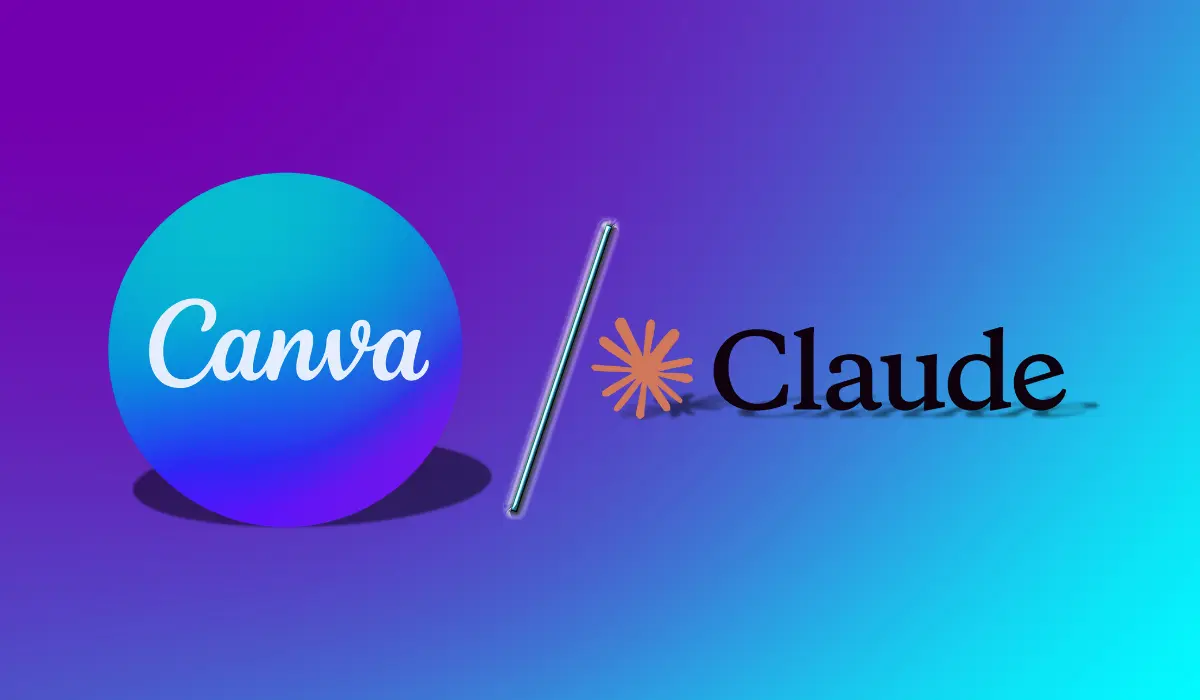Anthropic’s AI agent, Claude chatbot, is now integrated with Canva, offering new opportunities through its AI chat interface. Canva users can now prompt the chatbot to grab user data from multiple external apps and web services with a single click.
Integrated as part of the paid subscription, it uses Anthropic’s Model Context Protocol (MCP) through the Canva server. MCP is interconnected with all platforms that utilise it, allowing users to access remote services and local apps through its directory.
In addition to Canva, the directory now includes services such as Stripe, Figma, Prisma, Asana, and others from which users can directly access and churn the data needed, saving a significant amount of time.
Claude AI Collaboration Boosts Canva Services

Claude AI, trained by Anthropic using Constitutional AI to output accurate and secure results, is considered by the online developer community as a trustworthy assistant. It can process large amounts of information, which saves the designer’s time, and it provides ideas, generates text, images, and code, and guides the user in difficult situations.
Canva Ecosystem head Anwar Haneef stated that instead of uploading or manually transferring ideas, users can now generate, summarise, review, and publish Canva designs, all within a Claude chat.
With apt natural text prompts, Canva users can create, edit, and manage their designs easily with Claude AI. Apart from usual tasks such as creating presentations and resizing images, they can search for keywords within Canva Docs, Presentations, and brand templates, and summarise them through the Claude AI interface.
Canva’s Claude AI Integration Requires a Paid Claude Account
In addition to a premium Canva account, users need a paid Claude account to utilise the services. A premium Canva account starts at $15 per month, while the Claude AI has both a $17 per month version (Pro) and a $100 per month version (Max).
The $17 Pro version allows you to access Claude code directly in your terminal, and you can connect Google Workspace: email, calendar, and docs, apart from Canva and the additional third-party services in the directory.
While you can do complex work to an extent through the Pro version, the $100 Max version has 20x the potential of the Pro. Additionally, you will receive priority access at times of high traffic.
AI Tools Revolutionising the Designing Milieu
The usage of AI technology in designing has witnessed a drastic increase this year, offering both professionals and novice users new ways to enhance productivity, creativity, and efficiency. Various startups have employed AI agents as designers instead of real humans.
Figma, another collaborative interface design tool like Canva, has already integrated various AI-based tools, including the Claude AI Agent, into its interface. Beyond Claude Code, it has LLMs and tools like Copilot connected to it, providing an enhanced design experience and saving time and effort.
Trending Now: Grok 4 Features Revealed: Multimodal, Voice Mode, Real-Time Search
Final Thoughts: Will AI Replace Designers?
While AI simplifies our work, concerns have been raised by many about AI replacing humans in various jobs. Bill Gates recently stated that artificial intelligence is about to redefine the job market by changing the nature of the jobs. According to him, doctors and teachers will be replaced by AI systems soon.
Bill Gates addresses it positively, stating that developing countries where access to healthcare and education remains limited can benefit from such advancements. He also specifically mentions energy experts, biologists, and developers among the professions that AI will not interfere with much.
In the case of designing, just like how Canva acted as a tool for designers in its beginning stages around 2012, the emerging AI Assistants will also act as mere tools instead of replacing the designers, who are preoccupied with major creative and cognitive differences from artificial intelligence (AI).




